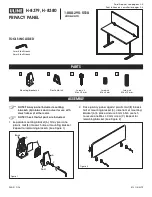
Abacus junior 5
User’s Manual
27
The sample rotor will turn into inside of the instrument and the needle draws 90
µ
l of
sample from the tube. The aspirating needle is retracted, while its outer surface is
automatically rinsed with diluent. This insures a low carry-over between samples.
After a few seconds the rotor turns out and the needle remains inside the instrument.
Now you can remove the sample tube from the adapter of the sample rotor.
5.2 Sample analysis
5.2.1 Sample preparation
Use K
3
-EDTA anti-coagulated fresh whole blood as sample.
Prior
to sampling, mix
the sample gently by
inverting it 11 times
.
Do not shake
as this could damage the
blood cells.
5.2.2 Modifying lyse quantity
The default lyse quantity can be adjusted by pressing
(
LIMITS) for each
species in the measurement ready screen.
An additional option to modify the lyse quantity by
±
0.05 ml or
±
0.1 ml
is available
during analysis (but this only is valid for the actual sample to be run). Press
↑
to
increase
the lyse quantity
(+0.05/0.1 ml)
if the separation between lysed RBCs and
WBC populations is poorly differentiated, resulting in increased WBC and LYM
counts. Press
↓
to
decrease
the lyse amount
(-0.05/0.1 ml)
if the WBC histogram
seems to be shrunk to the left, i.e. the different WBC populations are overlapped.
This can inhibit proper separation of WBC populations.
If this function is selected, the
L+/L-
(for 0.05 ml)
or
L++/L--
(for 0.1 ml)
signs can be
seen in the top-left corner during analysis (see the screen below).
The two important parameters influencing lysing are reaction time and lyse quantity.
You cannot change the lysing reaction time, as it is adjusted to the lyse reagent
supplied by Diatron.
















































